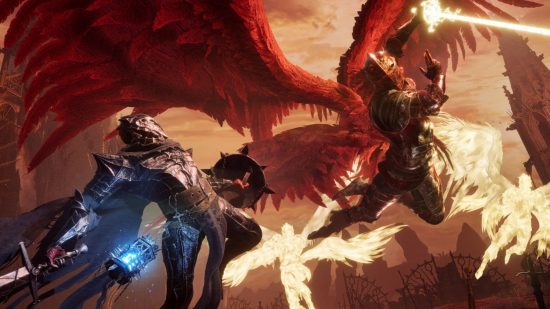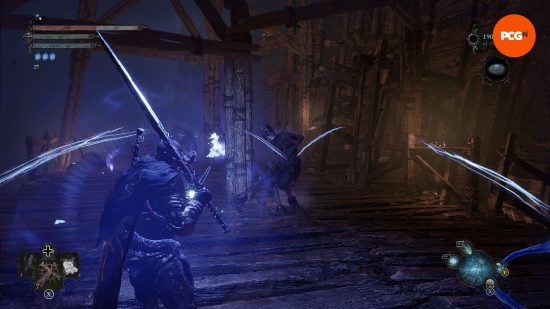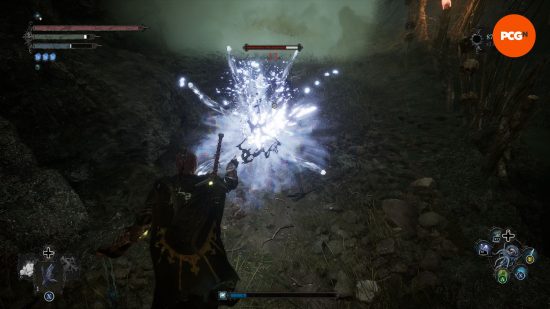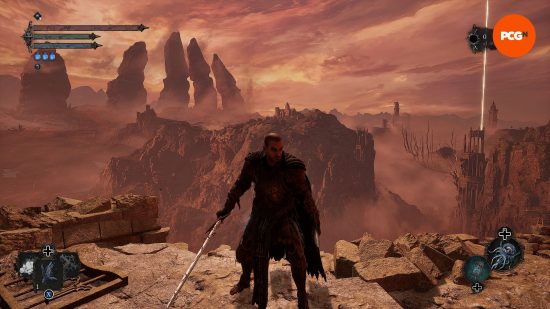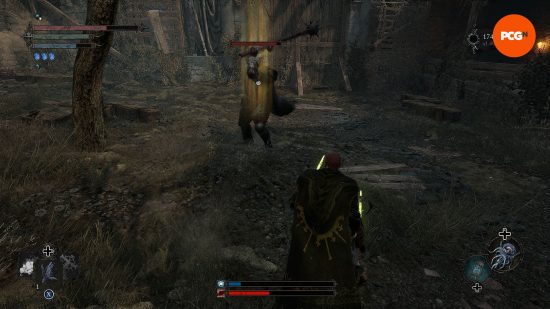Lords of the Fallen is a soulslike stuck between two worlds. While you explore the grimdark land of Mournstead and its Umbral counterpart in Hexworks’ debut release, you’ll find innovative ideas bogged down by a prescriptive adherence to Dark Souls’ now-iconic design. There’s a solid soulslike adventure here, but I wish Lords of the Fallen could have stepped fully out of FromSoftware’s shadow.
If you played the original Dark Souls, Lords of the Fallen will feel instantly familiar to you. Like a younger cousin who’s clearly copied your style, Hexworks uses FromSoftware as an inspiration for almost everything in the RPG game, from world structure to combat and storytelling. Taking direct inspiration from the first Dark Souls does bring some comforting familiarity, but it also shines a negative light on everything the soulslike doesn’t do quite as well as FromSoftware’s classic.

Lords of the Fallen’s new ideas are first-rate, however, and some even push the genre forward while twisting it in interesting ways. First up is the Umbral, which is another world that’s layered beneath the Land of Mournstead wherever you look. You can peer into this secret world using the Lords of the Fallen Umbral lamp, then enter it at any time to solve puzzles, find upgrades, fight tougher enemies, or just find a hidden route to your objective.
Umbral is also used well in many of the boss fights, presenting them as a sort of mini-puzzle you need to solve to make the encounter easier. Umbral is a wrinkle that enhances exploration and most of the combat in meaningful new ways, and I’d love to see Hexworks expand upon it in a sequel.
The problem with Umbral comes with how it presents its difficulty, as while there are a series of enemies you can only find in this realm that impede progress or guard your much-needed upgrades, Hexworks often substitutes ‘more difficult’ with ‘more enemies.’
There are ultra-weak canon fodder enemies that consistently spawn around you in Umbral, and they’re often used to pad out encounters unnecessarily. There’s nothing wrong with fighting a horde every once in a while, but when they just get in the way and act more like a nuisance than a legitimate challenge, it’s a problem.
While Umbral has some growing pains, Lords of the Fallen’s treatment of magic in a soulslike game is absolutely superb. You still need a catalyst and spells, both of which you can use when your stats are at a certain level, but using magic isn’t confined to replacing a weapon. Instead, the catalyst is an extra item, and you can seamlessly use it at any time. On top of that, you can have multiple spells at once in the catalyst, so you simply pull the catalyst out and press a button to use a spell.
This makes magic smooth and viable as an additional tool in your arsenal to use alongside your melee build. Using magic and melee in conjunction is a real treat and fully embraces the “Jedi fantasy” creative director Cezar Virtosu said it would. I’ll use a spell to put poison on my two swords, lay down a poison cloud, shoot balls of energy that weaken enemies, and throw a javelin all with ease in between sword swings. The build possibilities are also blown through the roof with this, so I can’t wait to see what people come up with.
Lords of the Fallen also adopts an active health regen system, where you have a brief window to regain health by landing hits after an enemy strikes you while you’re blocking. This encourages you to block regularly, and given that block and parry are bound to the same key, Lords of the Fallen ends up with a tactical and offensive playstyle that sits somewhere between Bloodborne and Dark Souls.
On the whole, Lords of the Fallen’s level design is strong, with winding paths and a good sense of exploration that rewards you with some incredible weapons, armor, and spells, but it still isn’t perfect. You can fast travel between Vestiges (Lords of the Fallen’s bonfires) from the word go, but the shortcuts you unlock never have the same wow factor you’d get in a FromSoftware game. I also got properly lost more than once while trying to navigate all the paths you can take. In emulating Dark Souls here, Hexworks has shown how FromSoftware nailed it the first time around.
I was also regularly irritated by the game’s enemy placement. Lords of the Fallen too often crams as many tough enemies as possible into smaller spaces, which leads to frustrating encounters. Progress can therefore oftentimes feel like a relentless gauntlet that you’re better off sprinting through, hurriedly grabbing items as you go, rather than taking on enemies as they come. This unrelenting challenge works on occasion, but it happens far too often for it to feel like a deliberate difficulty spike, instead suggesting there’s little rhyme or reason to where enemies are placed.
Lords of the Fallen is supposed to be a challenge, and it is, but these issues make it difficult for all the wrong reasons. I enjoy getting beaten down and gradually working to overcome the initially insurmountable, but I don’t enjoy enemies that have hitscan-like accuracy and health bars the size of Pangea.
The Lords of the Fallen multiplayer offering includes summoning and invasions. Invasions play out like you’d expect, where you can either invade a player to fight them for XP or get invaded by someone attempting to do the same to you.
The co-op is a little different though, as you don’t disconnect when the host dies. Instead, you both just go back to the nearest Vestige. Right now only the summoned player can be revived too, and there’s a substantial mechanic here that I think Hexworks might have overlooked. If the co-op partner dies and is revived, they get all of their healing items back. As you can imagine, this makes bosses incredibly easy, letting you and your partner have infinite health items if you play on the safe side.
Co-op is a little broken, sure, but I also found it to be fun. Lords of the Fallen’s crossplay multiplayer is the answer if you’re struggling, and it makes bosses laughably easy. While this isn’t great design, I still found it to be entertaining. There’s even a fair bit of jank in co-op too, like bosses focusing solely on where the dead player fell, giving you loads of free hits, so I imagine there’s going to be some fixes coming.
So, what about these Lords of the Fallen bosses? The game has a lot of them, and most of them are well-designed. I mentioned that Umbral turns a few of them into puzzles you need to solve, but I found that bosses would vary in quality and variety. Some would overcrowd you in small areas and feel deeply unfair, some are just standard enemies with more health, and others are fights that I’ll remember fondly for a long time.
Sometimes they just straight up don’t work, though, and one kept crashing the game so hard for me that I thought I’d never actually be able to finish it. Just like in Dark Souls (to belabor the comparison) some bosses are gimmick fights, and I really don’t think Lords of the Fallen needs them. The bosses that use the Umbral mechanic or present one-on-one encounters with a high skill ceiling are exactly what the game benefits from, with the rest feeling lesser by comparison.
If you’re a fan of soulslikes, then Lords of the Fallen is a good time. The Umbral, magic system, and twist on Bloodborne’s health regen mechanic all adjust how you engage with both the world design and enemies in new and meaningful ways, turning Lords of the Fallen from a Dark Souls cover band to a group with a few hits in its own right.
Lords of the Fallen is not perfect, but I’d love to see Hexworks iterate on its original ideas here and fully escape the shadow of Dark Souls, perhaps in a sequel. These new ideas might be flawed in some ways, but they shift how you play and have a lot of promise. It’s when Hexworks overcommits to ‘Darks Souls but slightly worse’ that I felt the game falter. So while Lords of the Fallen definitely still sits in the shadow of Dark Souls, its nifty little lamp may one day help to guide it out.
Lords of the Fallen review
With some strong new ideas and often solid core design, Lords of the Fallen is an enjoyably grimdark soulslike. That said, Hexworks’ debut release borrows a lot from Dark Souls, and while this makes for a good baseline, it could do more to escape the shadow of better games.
